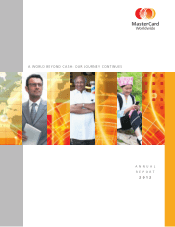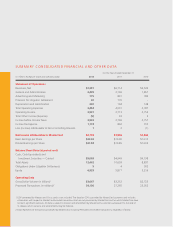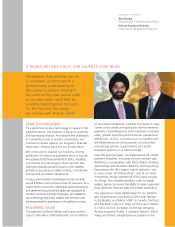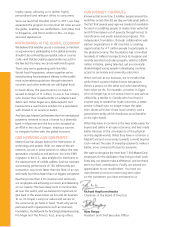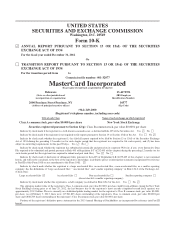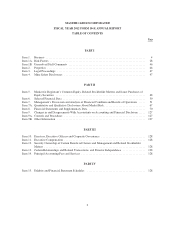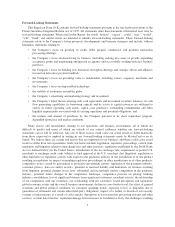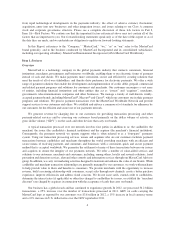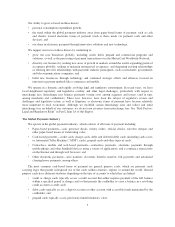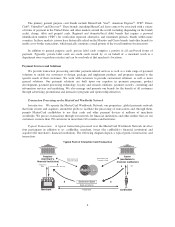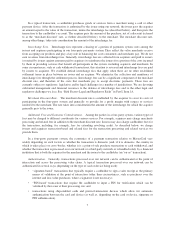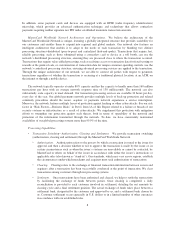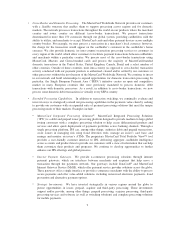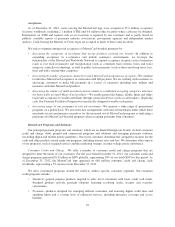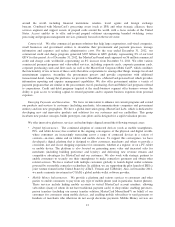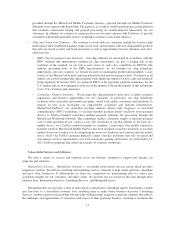MasterCard 2012 Annual Report Download - page 7
Download and view the complete annual report
Please find page 7 of the 2012 MasterCard annual report below. You can navigate through the pages in the report by either clicking on the pages listed below, or by using the keyword search tool below to find specific information within the annual report.Forward-Looking Statements
This Report on Form 10-K contains forward-looking statements pursuant to the safe harbor provisions of the
Private Securities Litigation Reform Act of 1995. All statements other than statements of historical facts may be
forward-looking statements. When used in this Report, the words “believe”, “expect”, “could”, “may”, “would”,
“will”, “trend” and similar words are intended to identify forward-looking statements. These forward-looking
statements relate to the Company’s future prospects, developments and business strategies and include, without
limitation, statements relating to:
• the Company’s focus on growing its credit, debit, prepaid, commercial and payment transaction
processing offerings;
• the Company’s focus on diversifying its business (including seeking new areas of growth, expanding
acceptance points and maintaining unsurpassed acceptance and successfully working with new business
partners);
• the Company’s focus on building new businesses through technology and strategic efforts and alliances
focused on innovative payment methods;
• the Company’s focus on providing value to stakeholders, including issuers, acquirers, merchants and
governments;
• the Company’s focus on chip-enabled technology;
• the stability of economies around the globe;
• the Company’s advertising and marketing strategy and investment;
• the Company’s belief that its existing cash, cash equivalents and investment securities balances, its cash
flow generating capabilities, its borrowing capacity and its access to capital resources are sufficient to
satisfy its future operating cash needs, capital asset purchases, outstanding commitments and other
liquidity requirements associated with its existing operations and potential obligations; and
• the manner and amount of purchases by the Company pursuant to its share repurchase program,
dependent upon price and market conditions.
Many factors and uncertainties relating to our operations and business environment, all of which are
difficult to predict and many of which are outside of our control, influence whether any forward-looking
statements can or will be achieved. Any one of those factors could cause our actual results to differ materially
from those expressed or implied in writing in any forward-looking statements made by MasterCard or on its
behalf. We believe there are certain risk factors that are important to our business, and these could cause actual
results to differ from our expectations. Such risk factors include: legislation, regulatory proceedings, central bank
regulation and litigation related to interchange fees and other practices; regulation established by the Dodd-Frank
Act (as defined below) in the United States; introduction of the no-surcharge rule; requirement to permit U.S.
merchants to surcharge credit cards (subject to final approval of the U.S. merchant class litigation); regulation or
other legislative or regulatory activity with respect to the payments industry in one jurisdiction or of one product
resulting in regulation (or impact on pending regulatory proceedings) in other jurisdictions or of other products;
competitive issues caused by preferential or protective government actions; regulation of the payments industry,
consumer privacy, data use and/or security; potential or incurred liability and limitations on business resulting
from litigation; potential changes in tax laws; substantial and increasingly intense competition in the payments
industry; potential future changes in the competitive landscape; competitive pressure on pricing; banking
industry consolidation; loss of significant business from significant customers; merchant activity; the relationship
of our competitors with our customers; our relationship with our customers; brand perceptions and reputation;
global economic events and the overall business environment; decline in cross-border travel; the effect of general
economic and global political conditions on consumer spending trends; exposure to loss or illiquidity due to
guarantees of settlement and certain other third-party obligations; impact of a failure or breach of our security
systems or infrastructure as a result of cyber attacks; disruptions to our transaction processing systems and other
services; account data breaches; reputation damage from increases in fraudulent activity; the challenges resulting
3

